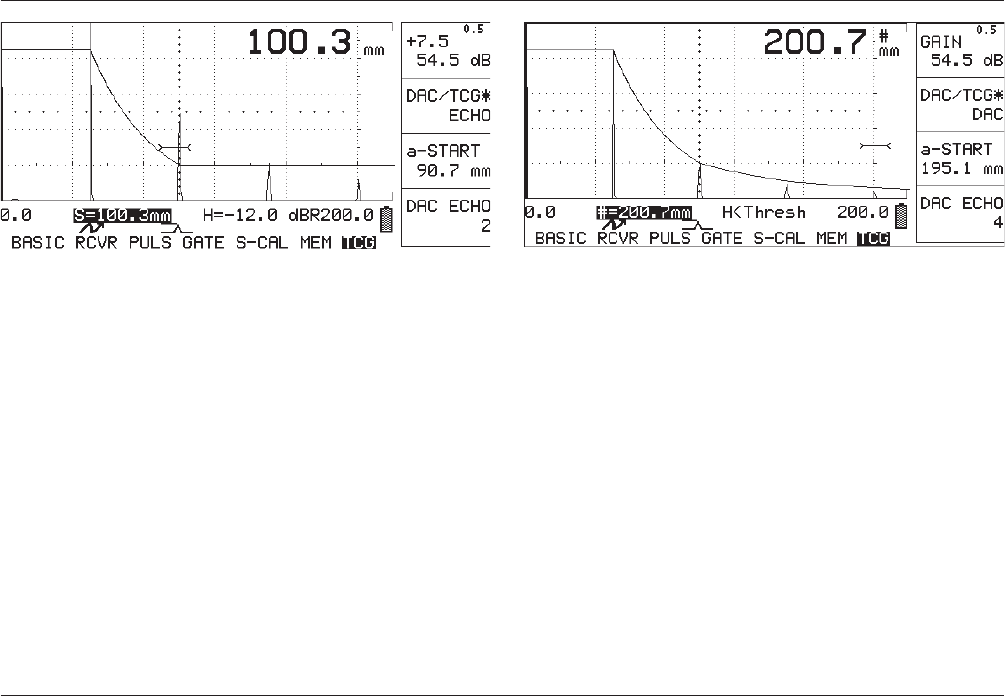
Krautkramer USN 52R/USN 52L Issue 05, 02/00 5-29
– Continue to proceed in this way until all available
reference echoes are recorded.
– Switch on the curve now by setting the DAC/TCG
function to DAC:
The record mode is automatically switched off, the
curve is displayed, and all echo indications can be
evaluated relative to this curve.
H Note:
The DAC/TCG function is now marked with “*“ indicating
that the current setting contains a DAC curve.
The marking DAC/TCG* also appears when the function
is switched off.
– If you require an evaluation in the TCG mode, switch
the DAC/TCG function over to TCG.
All reference echoes will now be at approx. 80%
screen height. At the same time, you can now have
a graphic display of the gain increase with the
CURVE function.
– All echoes will from now on be evaluated in relation
to the reference height (dBR); this is the height of the
first reference echo.
– To be on the safe side, store this setting in a free
data set.
Recording a Distance-Amplitude Curve Operation
Krautkramer USN 52R/USN 52L Issue 05, 02/00 5-29
– Continue to proceed in this way until all available
reference echoes are recorded.
– Switch on the curve now by setting the DAC/TCG
function to DAC:
The record mode is automatically switched off, the
curve is displayed, and all echo indications can be
evaluated relative to this curve.
H Note:
The DAC/TCG function is now marked with “*“ indicating
that the current setting contains a DAC curve.
The marking DAC/TCG* also appears when the function
is switched off.
– If you require an evaluation in the TCG mode, switch
the DAC/TCG function over to TCG.
All reference echoes will now be at approx. 80%
screen height. At the same time, you can now have
a graphic display of the gain increase with the
CURVE function.
– All echoes will from now on be evaluated in relation
to the reference height (dBR); this is the height of the
first reference echo.
– To be on the safe side, store this setting in a free
data set.
Recording a Distance-Amplitude Curve Operation


















